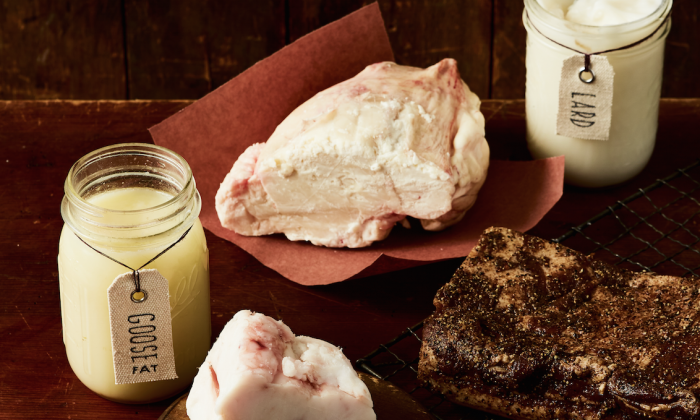Commentary
The recent campaign event featuring Donald Trump working at a McDonald’s fry station has sparked memories of the fast-food industry’s past practices. One notable change was McDonald’s switch from frying their potatoes in beef fat, known as tallow, to using vegetable oils in the 1990s. This shift in cooking methods may have impacted the taste of their fries over time.
While growing up in Texas during the era of vegetable oils like Crisco, the use of tallow was not common knowledge to many. However, with the current trend leaning towards a reevaluation of cooking fats, there has been a renewed interest in animal fats such as lard.
Experimenting with lard, a pig fat derivative, has shown promising results in cooking. Despite its historical reputation, lard has proven to be a versatile and flavorful cooking fat, with a higher smoke point than seed oils. It can be used for frying, cooking vegetables, making pie crusts, and more.
Although lard may come with a higher price tag compared to other fats, its culinary benefits are worth considering. Its versatility in cooking, especially in creating flaky pie crusts, makes it a valuable ingredient in the kitchen.
Despite misconceptions surrounding lard and its association with weight gain, it remains a valuable cooking fat with a rich flavor profile. Additionally, lard can be used in various recipes, offering a healthier alternative to processed cooking oils commonly found in store-bought mixes.
By incorporating lard into homemade mixes and dishes, individuals can enjoy the benefits of a more natural and flavorful cooking experience. With a shift towards home cooking and a return to traditional ingredients, lard’s versatility and taste are being rediscovered in modern kitchens.
The convenience of this method is its accessibility. Once you start, you’ll likely find yourself using it more frequently, even scaling up the recipe for dry ingredients.
Impress your guests with a last-minute brunch by whipping up biscuits or pancakes on the spot!
Personally, I believe that waffles are a different story. They should be made from scratch, with eggs separated and whites whipped. In this case, lard is the preferred oil choice. Butter doesn’t hold up well under heat, and corn oil can be too greasy.
The vilification of lard was a mistake of modern times, influenced by wartime restrictions and later perpetuated by grain dealers. Americans consume too much corn in various forms, including in sodas and fuel. Animal fats, like lard, are suitable for cooking and should be embraced for their flavor and health benefits.
Opinions expressed in this article are solely those of the author and do not necessarily reflect the views of The Epoch Times.






